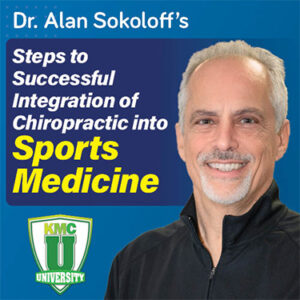Posted by nuclearnetworking on Mar 7, 2021
 Active vs. Maintenance Care with Medicare
Active vs. Maintenance Care with Medicare
Explaining the distinction between these two types of care feels like a scene from the movie Ground Hog Day. We wish we had a dollar for every time that we have been asked to clarify this topic. It’s possibly one of the least understood; yet the concepts are clear, based on the definitions provided. Read on for our clarified explanations.
Breaking Active vs. Maintenance care down:
To make this as simple as possible, we should begin by clarifying that within Medicare, there is a specific definition of Medical Necessity. Clearly and precisely stated, it is: : The patient must have a significant health problem in the form of a musculoskeletal condition necessitating treatment, and the manipulative services rendered must have a direct therapeutic relationship to the patient’s condition and provide reasonable expectation of recovery or improvement of function.
In translation and step by step:
- The Medicare patient must have a significant health problem (for Medicare, this translates to loss of function, not just pain).
- A Medicare patient must present with a musculoskeletal condition (which means an issue relating to the subluxation found, which is the secondary neuromusculoskeletal diagnosis Medicare requires).
- A manipulation must be rendered (CMT 98940-98942), and in the areas directly relating to the patient’s condition (same areas or related to same complaint).
- And there must be a reasonable expectation that the manipulation would improve the patient’s function (the patient should get better).
If the services rendered to a Medicare patient fall into this definition AND, you show this to be true in your documentation, then your service is Medically Necessary and therefore Active Care, designated with the AT, Active Treatment, modifier. Anything that falls outside of this definition is Maintenance or Wellness care.
You may be asking, “Wait, is that really all there is to it?” Well, yes and no.
As for the definition, yes. However, where providers often experience most of the confusion, is in how they document this “proof” in order to get paid. So, let’s simplify that process. One of the best things about Medicare is that they provide you with the rules. It is like you are the coach for a college football team that has made it to the Rose Bowl and now, someone just handed you the “playbook” for the other team.
Medicare Says:
- Coverage for Chiropractic services is specifically limited to manual manipulation of the spine to correct subluxation (manipulative services are part of the Medical Necessity definition).
- You must have the presence of a subluxation that causes a significant neuromusculoskeletal condition. Medicare does not pay for treatment unless it is for manual manipulation of the spine to correct a subluxation and the subluxation must be consistent with the complaint/condition that the patient stated as the reason for seeking care (Chief Complaint).
- Documentation of the subluxation is needed. You must prove that the subluxation exists by one of two methods: x-ray or physical examination. If documentation by physical examination, then the P.A.R.T system must be used.
- P.A.R.T is the documentation system that Medicare requires when you do not take x-rays but perform a physical examination on the patient in order to prove a subluxation is present. The four components of PART are P=Pain/Tenderness, A=Asymmetry/Misalignment, R=Range of Motion, T=Tone/Tissue Changes. Of the four components listed above, two of the four must be met AND one of the two MUST be the A or R component.
- A physical examination must be performed for both initial and subsequent visits. When documenting these visits, specific requirements apply, whether the subluxation is demonstrated by x-ray or by physical examination.
- This is your Evaluation and Management (E/M) visit (codes 99201-9925 or 99212-99215). Documentation guidelines for E/M codes apply. You must meet the three key elements (History, Exam and Medical Decision Making) for a New Patient exam and two of the three for an Established Patient exam.
- CMS requires that the following be included in the chart notes describing the presenting complaint: Chief Complaint (Symptoms causing the patient to seek treatment, Mechanism of Onset, Quality and Character of symptoms /problem (Onset, duration, intensity, frequency, location and radiation of symptoms), Aggravating or relieving factors, prior interventions, treatments, medication, secondary complaint, Family history, Past health record (general health, prior illness, injuries, hospitalizations, medications or surgical history).
- Recommended level of care including specific treatment goals and objective measures to evaluate effectiveness must be included. Medicare publishes their Local Coverage Determination (LCD) which outlines the rules and possibly the permitted diagnosis codes.
Medicare patients can bounce between episodes of active and maintenance care, so it is imperative that you understand how to document these episodes correctly. As a provider, you need to do your homework and be sure that you are the one with the “play book.” KMC University has all of this information and more and will be happy to assist you.
Need more help? Schedule a free Discovery Assessment or purchase a Solution Consultation







Comments on Active vs. Maintenance Care with Medicare